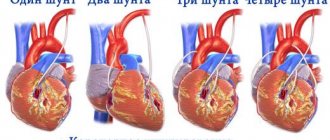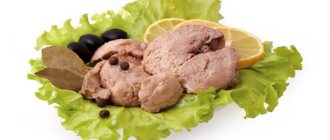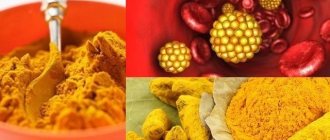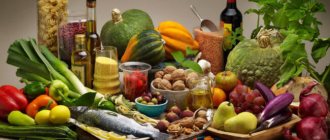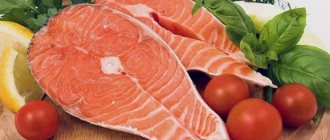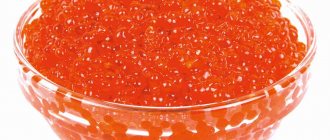When blood sugar levels rise, hormone production is disrupted. This affects all types of metabolism in the body. Therefore, diabetes mellitus is often diagnosed with increased cholesterol levels. The main reason for this condition is considered to be poor nutrition - an abundance of carbohydrates, fatty foods, and sweets. Although only 20% of cholesterol present in the blood comes from food, diet greatly influences cholesterol levels. Primarily through the amount of glucose. Therefore, a diet with high blood sugar and cholesterol helps to avoid serious complications and normalize their number.
Rules for following a diet for high sugar and cholesterol
A diet to reduce blood sugar and cholesterol is designed for every day, and must be followed constantly. People with a predisposition to lipid or carbohydrate metabolism disorders need to change their lifestyle and eating habits. This is especially important for women over 50 years old, men with bad habits, patients with diabetes, atherosclerosis, and hypertension.
Proper nutrition helps reduce low-density lipoprotein levels, known as “bad” cholesterol, by 10-20%. With a decrease in dietary intake of fast carbohydrates and fats, the level of glucose and triglycerides also decreases.
In essence, a diet with increased amounts of cholesterol and blood sugar is a nutritional system. It is varied and contains all the necessary nutrients. The diet is balanced in the amount of proteins, fats and carbohydrates, and its calorie content is 2000-2500 kcal, which provides the body’s energy needs. The basic principles include the exclusion of fast carbohydrates, sweets and animal fats. There are also a few more rules to follow:
- eat small meals, 5-6 times a day, this will eliminate hunger;
- you should not overeat, eat only small portions;
- replace animal fats with vegetable ones;
- limit salt intake;
- consume meat and eggs no more than 2-3 times a week;
- eat fresh vegetables and fruits in unlimited quantities;
- Prepare food fresh, do not use semi-finished products;
- have dinner no later than 2-3 hours before bedtime;
- drink at least 2 liters of water per day.
What to eat is allowed
In order for nutrition to help maintain normal sugar and cholesterol levels, you need to choose the right foods for your daily diet. The emphasis should be on fresh vegetables and fruits, as fiber activates digestion and metabolic processes. Approximately 45-50% of the daily diet should be carbohydrates. You need to choose slow ones, that is, those that are not absorbed immediately: cereals, whole grain bread, vegetables. 15-20% of the daily diet is fats from foods, as well as vegetable oils. The rest comes from protein foods.
It may seem that the diet with such a diet is meager, but in fact, with high sugar and cholesterol, you can eat a large number of foods:
- porridge, except semolina, millet and rice;
- lean poultry, veal, rabbit, lean fish;
- egg white;
- low-fat dairy products;
- rye and whole grain bread;
- fresh vegetables, herbs;
- unsweetened fruits;
- vegetable oils;
- nuts, seeds.
What is prohibited
It is necessary to completely exclude alcoholic and carbonated drinks, fatty meats, offal, trans fats, fast food, and processed foods from the diet. Fast carbohydrates are prohibited: sweets, products made from white flour, confectionery. Sausages, lard, lamb, pork, butter, margarine, mayonnaise, and canned food are excluded.
It is recommended to use a label that lists foods that contain high amounts of cholesterol. They must be avoided.
| Product, 100 g | Cholesterol, mg |
| Cheese | 1000-1500 |
| Pig brains | 2000 |
| Egg powder | 2050 |
| Liver | 400-500 |
| Egg yolk | 1510 |
| Pork | 380 |
| Butter | 280 |
| Kidneys | 300 |
| Turkey | 210 |
| Ghee | 220 |
| Red caviar | 310 |
| Butter | 190 |
| Sour cream 30% | 130 |
| Fat cottage cheese | 60 |
| Ice cream | 60 |
| Beef | 90 |
| Mayonnaise | 100 |
And to prevent an increase in sugar, you need to exclude foods with a high glycemic index - GI. If this indicator is above 55, then the product will lead to an increase in glucose levels.
| Product | GI |
| Dates | 146 |
| French baguette | 136 |
| Noodles | 131 |
| Shortbread cookies | 106 |
| Watermelon | 103 |
| Wheat bread | 100 |
| Sugar | 96 |
| baked potato | 95 |
| Rice flour | 95 |
| Hamburger bun | 92 |
| Mashed potatoes | 90 |
| Pasta | 90 |
| Honey | 90 |
| Ice cream sundae | 87 |
| Cornflakes | 85 |
| Chips | 80 |
| Muesli with raisins | 80 |
| Waffles | 76 |
| Zucchini | 75 |
| Pumpkin | 75 |
| Millet | 71 |
| Chocolate | 70 |
| Corn | 70 |
| Marmalade | 70 |
Why is it important to diet
Cholesterol is an organic compound consisting of a fatty alcohol. The substance is mostly produced by the liver system of the body, and comes from the outside along with food in relatively small proportions (only 20–25%). In itself, this compound cannot be harmful or beneficial; it is intended for the synthesis of protein metabolism and the formation of cell structure.
But as the amount of cholesterol in the body increases, it begins to be deposited on the vascular walls, eventually leading to the growth of plaques that clog capillaries and interfere with proper blood flow. After 50 years, this state of affairs becomes dangerous for a person: clogged vessels cannot fully supply internal organs and the brain with blood, which is why the risk of heart attack and stroke increases in old age.
And if the body can fight a lack of cholesterol on its own, then an excess of the substance requires a change in the diet and usual (often not very correct) lifestyle. Why is proper and healthy nutrition so important for high cholesterol:
- promotes the removal of decay products, toxins and toxins accumulated in the intestinal tissues from the body;
- helps to lose weight, which is important for high cholesterol - almost all obese people have problems with blood vessels, high blood pressure and suffer from cardiovascular pathologies;
- helps prevent the development of atherosclerosis in women over fifty years of age - during menopause, estrogen production decreases, which is why “harmful” cholesterol begins to actively accumulate on the vascular walls;
- indirectly participates in the treatment of concomitant diseases - the gastrointestinal tract (gastrointestinal tract), diabetes, hypertension.
To begin the fight against cholesterol, it is important not only to understand the principles of proper nutrition, but also to give up bad habits. Vessels, already narrowed due to the deposition of cholesterol plaques, experience additional spasm when tobacco tar and ethyl alcohol enter the blood.
Only an integrated approach, including diet, quitting smoking and alcohol, providing the body with stable physical activity and frequent exposure to fresh air, can qualitatively reduce blood cholesterol levels. If the doctor has prescribed medications at the same time, the recommendations must be strictly followed.
No ads 1
Foods that lower blood sugar and cholesterol levels
When compiling a diet, you need to include as many foods with phytosterols as possible. These are substances that normalize sugar levels and prevent LDL from rising. The following foods are useful for reducing sugar and cholesterol:
- soya beans;
- unrefined corn, rapeseed and olive oils;
- sesame seeds;
- avocado;
- broccoli;
- buckwheat grain;
- almonds, walnuts;
- ginger, cinnamon;
- Jerusalem artichoke;
- chicory;
- citrus;
- carrots, tomatoes, eggplants.
Dish recipes
Choosing the right products is not enough; you need to know how to prepare them. Even dietary poultry meat, if improperly prepared, can cause increased cholesterol. Therefore, it is recommended to follow these rules:
- do not fry food, you can steam, boil, stew or bake;
- cook with little or no oil;
- Remove skin and fat from poultry before cooking;
- cook soups only in the second broth - first boil the meat for 3-5 minutes, drain the broth and continue cooking in clean water;
- for dressing salads, do not use sour cream or mayonnaise, season with lemon juice or low-fat yogurt;
- make porridge crumbly, if with milk, then diluted with water;
- Make a white omelet from eggs, use no more than 2 yolks per week;
- cheesecakes or casserole are made from cottage cheese;
- It is better to bake meat with vegetables in the oven.
General principles of dietary nutrition
Each person can create an approximate menu for himself from products allowed for consumption (this is described below). But an important point of the diet is the daily consumption of complex carbohydrates (their volume should be 50–60% of the total food eaten per day).
Complex carbohydrates that take a long time to digest and provide a feeling of fullness include pasta, cereals, whole grain bread, as well as fruits and vegetables. Fruit salads and vegetable dishes cleanse blood vessels of cholesterol deposits, give them tone, and make capillaries elastic and less brittle. A third of all vegetables eaten per day should be consumed raw.
Proteins are fish, lean meats and cottage cheese. Preference is given to poultry meat with the skin removed, and it is better to stew or boil it rather than fry it. For a side dish, it is better to choose stewed vegetables or complement the meat dish with fresh vegetable salad. This way the meat is digested more efficiently.
Egg whites are cholesterol-free, so you can eat them without restricting yourself. But the yolk contains substances that help increase the levels of the substance in the blood, which is why you are allowed to eat no more than three yolks per week. Dairy products should be chosen low-fat.
Small meals are another important point in the fight against bad cholesterol. It is better to eat food more often (up to 5–6 times a day), but in small portions, than to eat 1–2 times, but in large quantities. This facilitates the work of the gastrointestinal tract, creating a feeling of constant satiety. If you feel like you have an “empty stomach,” you can drink a glass of natural yogurt or low-fat kefir.
No ads 2
An example of a hypocholesterol diet for a week for women and men
The menu for women and men may differ only in calorie content, which depends on the person’s physical activity and the presence of excess weight. The diet should be complete, rich in vitamins and minerals. Every day it should include crumbly porridge, fresh vegetables, fermented milk products, vegetable soups, lean meat or fish. It is recommended to create a menu for a week so that it is varied.
The diet must include 3 main meals and 2-3 snacks, which will help you not to feel hungry. You can eat 1-2 slices of whole grain bread per day. Before going to bed, it is recommended to drink a glass of kefir or fermented baked milk.
| Day | Breakfast | Lunch | Dinner | Afternoon snack | Dinner |
| 1 | Oatmeal in water with apple pieces, chicory drink | Tangerine, a few almonds | Vegetable soup, steamed beef meatballs, fresh carrots, berry juice with ginger | Cottage cheese pasta with avocado | Baked pink salmon, buckwheat, rosehip decoction |
| 2 | Protein omelet, green tea with ginger | Apple with cinnamon | Buckwheat soup with chicken broth, boiled chicken breast, beet salad, dried pear compote | Green smoothie with sesame seeds | Cabbage stewed with soybeans, chicory drink |
| 3 | Buckwheat with milk, tea with cinnamon | Orange | Cabbage soup, boiled beef, salad of tomatoes, cucumbers, bell peppers, rosehip infusion | Curd pudding with nuts | Boiled hake, cauliflower, carrot, celery stew, chamomile tea |
| 4 | Low-fat cottage cheese, freshly squeezed orange juice | Grated raw carrots with walnuts | Vegetable soup, turkey meatballs, tomato salad, green tea with ginger | Apple with cinnamon | Buckwheat porridge with mushrooms, rosehip decoction |
| 5 | Buckwheat porridge with water, avocado and nut puree, chicory | Cheesecakes with cinnamon, tea | Soup with chicken meatballs, stewed cabbage, rosehip infusion | carrot juice | Vegetable stew with soybeans, berry juice with ginger |
| 6 | Protein omelet with broccoli, green tea | Apple with cinnamon | Bean soup, buckwheat with boiled meat, chicory | Green smoothie with avocado | Fish, baked broccoli, carrot juice |
| 7 | Cottage cheese pudding with sesame seeds, apple juice | Vegetable salad with nuts | Borsch, turkey, baked with vegetables, berry juice with ginger | Tomato juice | Oatmeal on water, steamed veal cutlet, green tea |
The diet will help keep your blood sugar and cholesterol levels under control. You need to make this diet permanent, then digestion will improve and your well-being will improve. If you completely avoid prohibited foods, you can avoid hyperglycemia and hypercholesterolemia.
Cholesterol content in specific foods
To reduce cholesterol, you need to eat healthy foods, which will help reduce levels of harmful substances. But how can we determine which products contain the least amount of this compound? The table below will help with this.
| Product type (in grams) | Cholesterol content |
| By-products: | |
| Brain | 2000 milligrams |
| Kidneys | 1100–1200 milligrams |
| Liver | 400-500 milligrams |
| Meat and poultry: | |
| Pork | 110 milligrams |
| Mutton | 90–100 milligrams |
| Rabbit | 90 milligrams |
| Beef | 80–90 milligrams |
| Goose | 90 milligrams |
| Duck | 90 milligrams |
| Chicken | 70–90 milligrams |
| Turkey | 60–70 milligrams |
| Eggs: | |
| Chicken yolk, 100 grams | 1234 milligrams |
| Chicken egg, 1 pc. | 210–280 milligrams |
| Quail egg, 1 pc. | 80–90 milligrams |
| Fish and other seafood: | |
| Fish fat | 485 milligrams |
| Chum salmon | 214 milligrams |
| Carp | 90–170 milligrams |
| Shrimps | 152 milligrams |
| Red salmon | 141 milligrams |
| Squid | 85–95 milligrams |
| Coho salmon | 60 milligrams |
| Cod | 30–50 milligrams |
| Horse mackerel | 40 milligrams |
| Dairy products: | |
| Butter | 180 milligrams |
| Hard cheese | 80–120 milligrams |
| Sour cream, 30% fat | 100 milligrams |
| Adyghe cheese | 70 milligrams |
| Cream, 20% fat | 60–70 milligrams |
| Cottage cheese, 18% fat | 60 milligrams |
| Milk, 3% fat | 14.4 milligrams |
| Milk, 2% fat | 10 milligrams |
| Kefir, 1% fat | 3.2 milligrams |
You don’t need to have the knowledge of a doctor to understand which foods should be avoided according to the table, and which should be given preference. Next, we will talk about the list of prohibited foods and why it is not recommended to eat them if your blood cholesterol levels are elevated.
